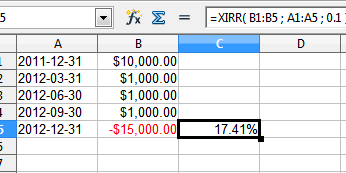The Optimal RRSP/TFSA Contribution
Now that we are in RRSP season, you may be wondering “How much should I contribute to my RRSP?”
The proper way to figure this out is to identify your “optimal RRSP/TFSA contribution”. This is a key factor in every retirement plan.
Most Canadians decide how much to contribute based on the extra cash they have on hand, their RRSP contribution room, or sometimes the amount they need to contribute to avoid having to pay tax when they file their tax return.
The optimal RRSP/TFSA contribution, however, is based on integrating six key factors:
- Contribution required to have the retirement you want;
- Optimal RRSP contribution based on tax bracket;
- Choosing between RRSP or TFSA;
- Optimal based on lifetime RRSP and TFSA contribution room;
- Contribution required to get the refund you want; and,
- Cash or borrowed funds available.
To determine your optimal RRSP/TFSA contribution, you should evaluate each of these factors and then see what makes sense.
Contribution required to have the retirement you want
Your retirement plan should specify how much you need to invest each year in order to have the retirement you want. It should provide a balance between your lifestyle today and your lifestyle after you retire. This is a critical factor, since the entire purpose of long term investing in your RRSP or TFSA is to save for your retirement.
For example, if your retirement plan says that you and your spouse need to invest $23,000 per year for you to have the retirement you want, then your total contributions to your RRSPs and TFSAs should probably be $23,000.
Very few Canadians actually have a detailed retirement plan. They have not planned when they can retire, what exact lifestyle they will have when they retire, and how much they need to invest to achieve it. The classic saying is that: “By failing to plan, they are planning to fail”.
The contribution required to have the retirement you want is the key starting point to figure out your optimal RRSP/TFSA contribution.
Optimal RRSP contribution based on tax bracket
To get the largest possible tax refund, you need to know where you are in your current tax bracket. The optimal RRSP contribution amount based on your tax bracket is the amount you can contribute without going into the next lower tax bracket. For example, if your income is $100,000 per year, you will get a refund of about 43% on the first $19,000 you contribute, but then a smaller refund of only between 33% on contributions above $19,000. If you want to contribute $23,000 this year, you would get a larger refund by claiming $19,000 this year and $4,000 next year.
There are quite a few small tax brackets, but the main ones for Ontario for 2012 are roughly:
Taxable income Approximate Marginal tax rate
Less than $43,000 20%
$43,000 – $81,000 33%
$81,000 – $132,000 43%
More than $132,000 46%
RRSP or TFSA?
Is RRSP or TFSA is a better place for your retirement savings? The main issue is your marginal tax rate today (tax rate on the amount your will contribute) vs. your marginal tax rate when you withdraw the money, presumably after you retire (including the clawbacks on various government programs). The other issue is how effectively you will use your tax refund.
In general, if your taxable income is below $43,000 per year today, TFSA is probably better since you are in the lowest tax bracket. Your retirement tax bracket will be the same or higher. If you expect your taxable income after you retire to be very low (below $23,000 per year) or relatively high (above $70,000 per year) in today’s dollars, then TFSA is probably also better because you will be affected by the clawbacks of various government programs in addition to income tax.
To know for sure which is better, you need to have a retirement plan, so that you know what tax bracket you will be in after you retire.
For a more in depth discussion of the RRSP vs. TFSA issue and why considering the clawbacks is key, see my 2021 RRSP vs TFSA comparison.
Optimal based on lifetime RRSP and TFSA contribution room
It is generally a good idea to maximize all your RRSP and TFSA contribution room over your working life, since both can provide significant benefits for you from tax deferral and many years of tax-deferred or tax-free investment growth.
Your RRSP lifetime contribution room is your current room plus all the room you expect to get before you retire. Your new contribution room each year is 18% of your earned income for the previous year to an annual maximum ($22,970 for 2012), less an adjustment if you are in a pension plan.
For example, if you have $50,000 RRSP contribution room today and earn $100,000 per year with no pension plan, then you will get $18,000 additional contribution room each year. If you plan to retire in 25 years, then your additional future RRSP contribution room will be $450,000. Then your lifetime RRSP contribution room is $50,000 plus $450,000, or $500,000. To maximize your RRSP contributions by the time you retire, you should contribute $500,000 over 25 years, or $20,000 per year.
Note that you should allow for your expected salary increases. To simplify this calculation, we usually ignore inflation. If you expect your salary to just rise by inflation, then your RRSP contribution room would also rise by inflation and your contribution would be $20,000 per year plus inflation. TFSA contribution room is also expected to rise by inflation, but in $500 increments.
TFSA room is $5,000 per year per person starting in 2009, and increasing to $5,500 for 2013. Contribution room is not related to your income, so your lifetime contribution room continues even after you retire. If you have not contributed to a TFSA yet, your lifetime room up to 2013 is $25,500. If you plan to retire in 25 years, then your additional future TFSA contribution room will be $5,500 per year, or $137,500. Then your lifetime TFSA contribution room is $25,500 plus $137,500, or $163,000. To maximize your TFSA contributions by the time you retire, you should contribute $163,000 over 25 years, or $6,520 per year.
Contribution required to get the refund you want
If you have a specific plan for your refund, such as paying off a debt or making an RESP contribution for your children’s’ education, you may want to contribute enough to your RRSP to get the refund you want.
A common and effective strategy for parents trying to maximize their cash flow is to contribute monthly to their RRSP and then use the tax refund to contribute to their children’s RESP. For example, if you want a $5,000 refund so that you can contribute $2,500 to a family RESP for both of your children and you are in a 43% marginal tax bracket, you would need to contribute $5,000 divided by 43%, or at least $11,600 to your RRSP.
Cash or borrowed funds available
Where do you find the money to make your contribution? The amount you could contribute includes:
- Cash you have on hand.
- Your expected tax refund after making your contributions.
- The amount you can afford to borrow from a credit line or RRSP loan.
If you do not have the cash on hand, there are many possible strategies here, but the most effective are usually the “top-up”, “2-year loan strategy” and RRSP catch-up loan. Here are a couple ideas to give you a sense of what can be accomplished with a bit of creativity:
- If you have $10,000 cash, with the “top-up” strategy, you can borrow $7,000 from your credit line and contribute a total of $17,000 to your RRSP. If you are in a 43% tax bracket, you would get a tax refund of about $7,000, which you can use to pay off your credit line. The result is that you get an extra $7,000 invested without impacting your cash flow.
- You can effectively contribute $23,000 per year with only $1,000 per month using the “2-year RRSP loan strategy”. If you have no cash available to contribute, but have $1,000 per month available cash flow, you can take a 2-year RRSP loan of $23,000 every year. If you are in a 43% tax bracket, your tax refund would be almost $10,000, which you can apply to the loan. Your monthly payments would then pay it off in time to do it again next year.
Once you have worked out your optimal RRSP/TFSA contribution for each factor, you can put the pieces together to work out your optimal strategy.
In the next article, we will look at how to create your optimal strategy and work through an example so you can get a sense of the interplay of the various factors.
What is your “optimal RRSP/TFSA contribution”?
Reproduced by permission of The The TaxLetter
About the Author: Ed Rempel is a Certified Financial Planner (CFP) and Certified Management Accountant (CMA) who built his practice by providing his clients solid, comprehensive financial plans and personal coaching. If you would like to contact Ed, you can leave a comment in this post, or visit his website EdRempel.com. You can read his other articles here.
I've Completed My Million Dollar Journey. Let Me Guide You Through Yours!
Sign up below to get a copy of our free eBook: Can I Retire Yet?





Hi Abu,
I agree that maximizing everything means you don’t need to optimize. Optimizing is important when you don’t have the money to maximize everything.
In our case, many of our clients are doing other strategies, such as the Smith Manoeuvre, so their extra cash can be used for RRSP, TFSA, or to pay down the mortgage and reborrow to invest.
With the 3 options, optimizing is important. The Smith Manoeuvre with tax-efficient investments generally beats the TFSA. RRSP generally is either first or last priority, depending on tax brackets before and after retirement.
For clients doing the Smith Manoeuvre, even if they have cash to maximize RRSP and TFSA, optimizing their contributions is still important.
Ed
Since it is generally a good idea to max out your contributions, then there really is no need to worry about optimizing contributions. In this scenario, we can optimize by maxing out our RRSP accounts, then TFSA, and perhaps even market link them to index funds. Beyond that, there’s not much we can do asides from what we do with our other, regular taxable accounts.
Thank you Ed for your hard work! You give me good tips to think about my retirement plan..Unfortunately I’m not Canadian!
Hi Money Dave,
I agree completely. It’s amazing how many people just buy an RRSP for the tax refund now without considering whether they will be in a higher or lower tax bracket after they retire (including both income tax and clawbacks on government benefits to seniors).
Ed
Great article that really examines the specific nuances and subtleties of registered investing.
I was happy that you covered the tax bracket now vs. tax bracket at retirement question, and also gave us some tips on how to use the tax refund to bolster an RESP. Great article!
Absolutely thorough analysis! Very well explained Ed.